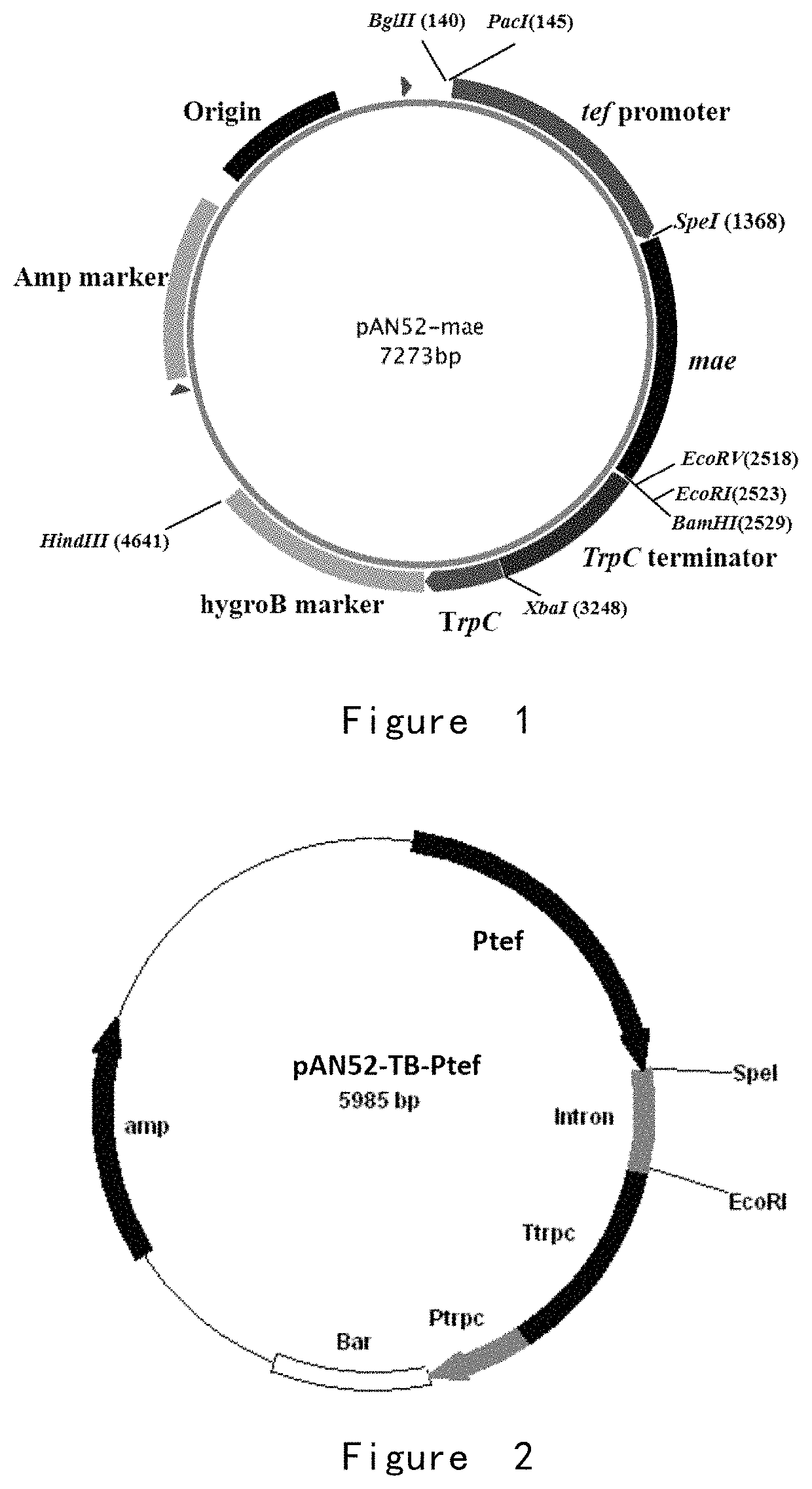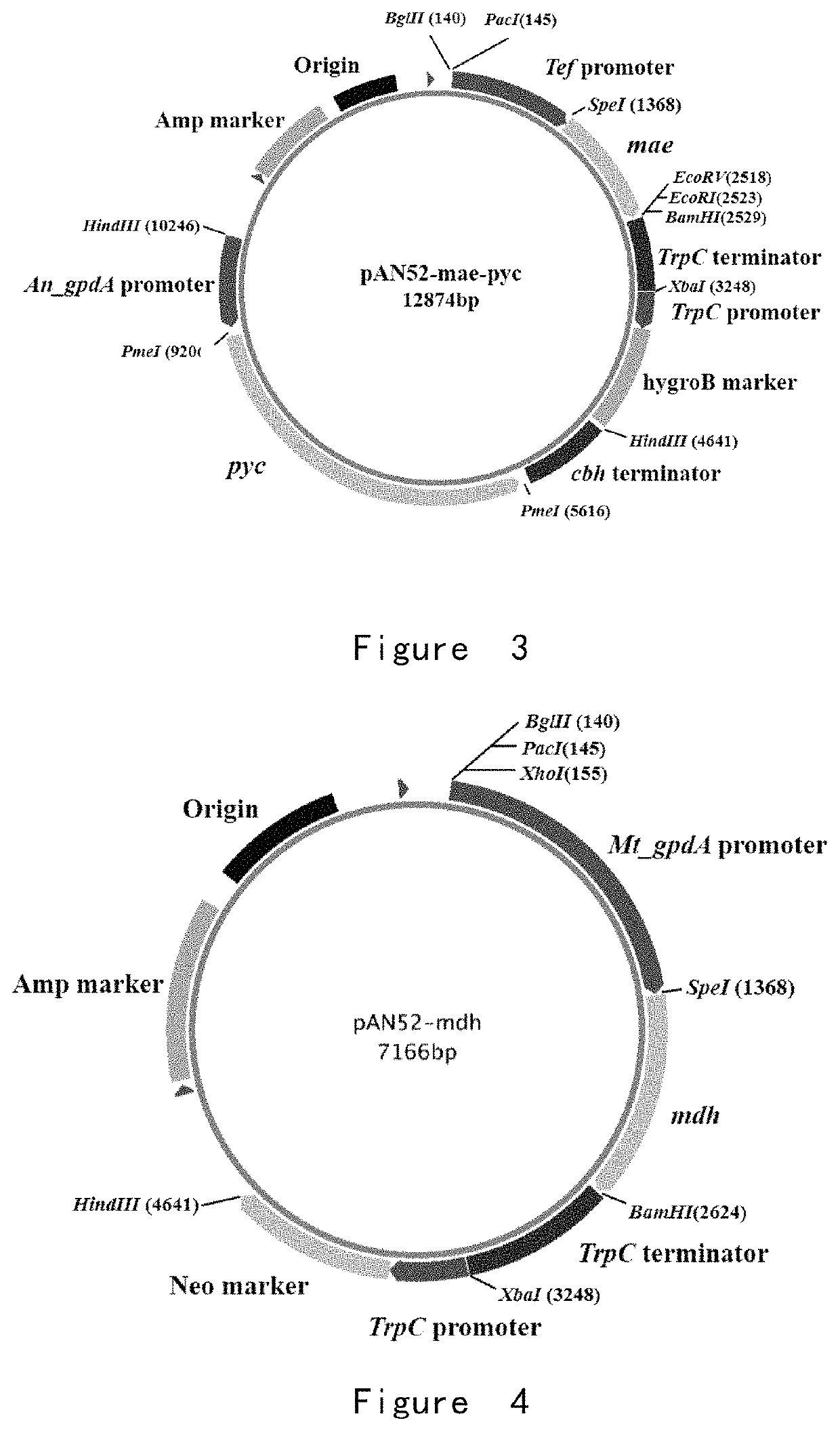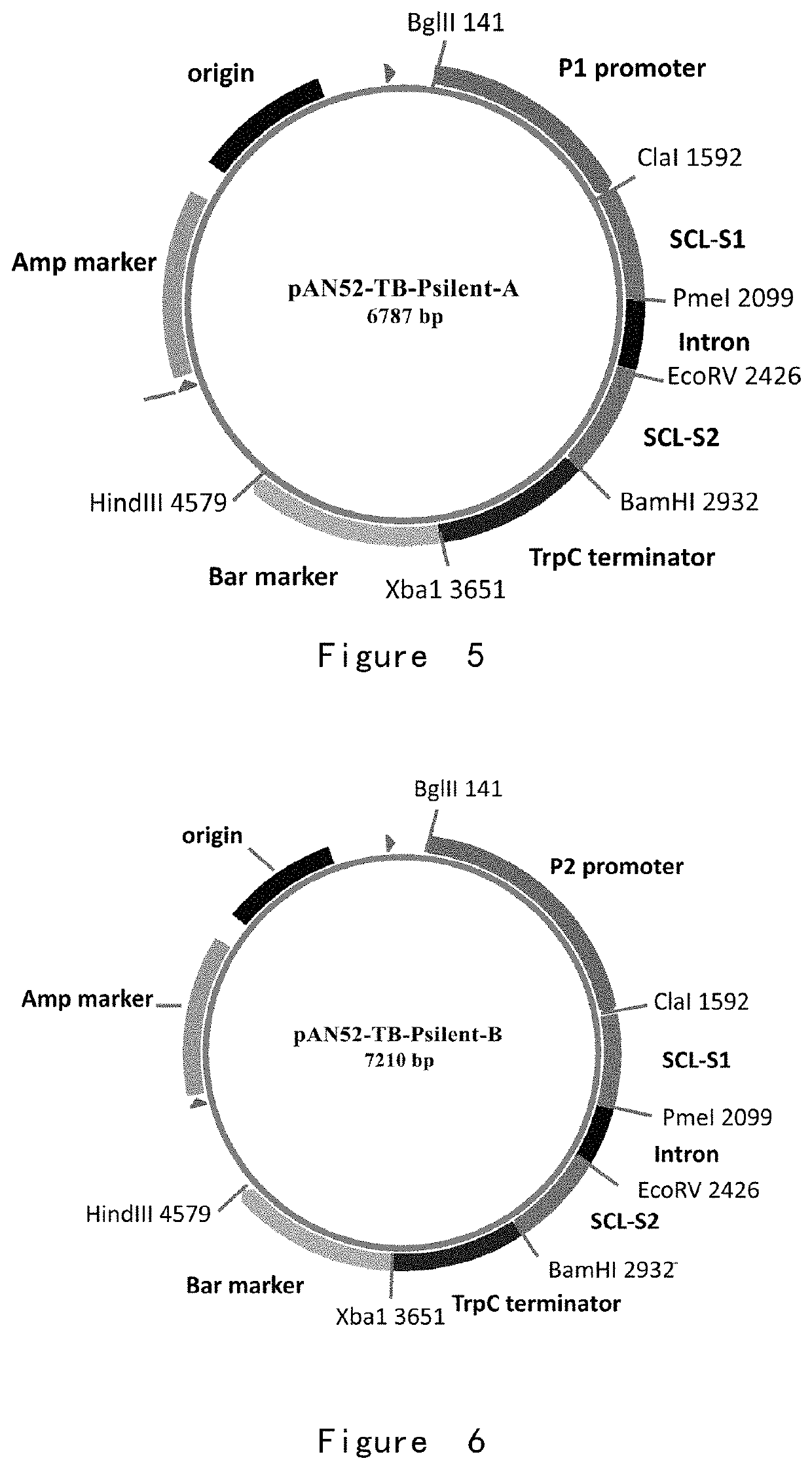Dibasic organic acid producing strain and preparation and application of same
a technology producing strain, which is applied in the field of biotechnology and bioengineering, can solve the problems of not meeting the basic requirements of industrial production, consuming a large proportion of the whole process cost, and affecting the production efficiency of dibasic organic acid, so as to reduce the cost of biomass-based chemicals and improve the fermentation level of dicarboxylic acid (especially malic acid), the effect of high fermentation temperatur
- Summary
- Abstract
- Description
- Claims
- Application Information
AI Technical Summary
Benefits of technology
Problems solved by technology
Method used
Image
Examples
example 5
Inhibiting the Expression of Succinyl-CoA Synthase by RNA Interference to Improve the Fermentation Level of Malic Acid
[0275]1. The upstream promoters interfering vector construction, named as P1 and P2 promoter (SEQ ID NO.: 72 and 73), were digested with BglII and PmeI and then ligated respectively into linearized vector pAN52-TB-Intron which was digested with the same enzymes to obtain the recombinant plasmid respectively named as pAN52-TB-Psilent-A and pAN52-TB-Psilent-B.
[0276]The first interference sequence SCL-S1 (SEQ ID NO., 74) of the succinyl-CoA synthase encoding gene scl in Myceliophthora thermophila was amplified by PCR in the guidance of primers, and the primers were shown as follows:
[0277]
SCL1-F:(SEQ ID NO.: 31)CCATCGATCATCAAGAACCTGTACCGCATCSCL1-R:,(SEQ ID NO.: 32)GGGTTTAAACCAATGATGGGGA, TCTTCAGGTC.
[0278]The second interference sequence SCL-S2(SEQ ID NO.: 75) of the succinyl-CoA synthase encoding gene scl in Myceliophthora thermophila was amplified by PCR in the guidance...
example 14
Separation and Preparation of Malic Acid
[0360]The separation and preparation of malic acid was generally divided into three steps: extraction of crude malic acid, refinement, and crystallization.
[0361]1. Extraction of crude malic acid: the fermentation broth was processed by six steps such as acid hydrolysis, filtration, neutralization, filtration, acid hydrolysis and filtration, so as to obtain the crude malic acid solution. The fermentation broth was put in the acid hydrolysis tank, and then adjusted to pH1.6 using sulfuric acid, and the acid hydrolysis should be carried out with stirring. After the acid hydrolysis was completed, the gypsum slag, bacteria and other precipitates were filtered by plate-and-frame filter press. The filtrate was put in the neutralization tank, and adjusted to pH 7.5 by adding CaCO3 solid and lime milk. The neutralization liquid was placed in the settling tank for 7 h to allow the calcium malate in the solution crystallize sufficiently. After the above ...
example 15
the Transformation of Wild Strains with Organic Acid Accumulation Ability and the Detection of their Capacity for Producing Organic Acid
[0365]In this study, vectors overexpressing malate dehydrogenase, aspartate aminotransferase and glutamic acid-aspartate transporter were constructed respectively and were used to transfer Aspergillus (including Aspergillus niger, Aspergillus sojae, Aspergillus oryzae) possessing capacity for accumulating organic acid to obtain multiple transformants and glucose was used as the reaction substrate. The method was shown as the method for the combination of construction of each transformant described in the above examples. Their products and yields were identified. Among them, the numbers of the engineered strains upon transformation and the products were shown in table 3:
[0366]
TABLE 3Name of theengineeredoriginalstrainCharacteristics of the engineered strainstrainPM101overexpression of malate dehydrogenaseAspergillusPM102Overexpression of malateAsperg...
PUM
| Property | Measurement | Unit |
|---|---|---|
| temperature | aaaaa | aaaaa |
| culture temperature | aaaaa | aaaaa |
| culture temperature | aaaaa | aaaaa |
Abstract
Description
Claims
Application Information
 Login to View More
Login to View More - R&D
- Intellectual Property
- Life Sciences
- Materials
- Tech Scout
- Unparalleled Data Quality
- Higher Quality Content
- 60% Fewer Hallucinations
Browse by: Latest US Patents, China's latest patents, Technical Efficacy Thesaurus, Application Domain, Technology Topic, Popular Technical Reports.
© 2025 PatSnap. All rights reserved.Legal|Privacy policy|Modern Slavery Act Transparency Statement|Sitemap|About US| Contact US: help@patsnap.com



